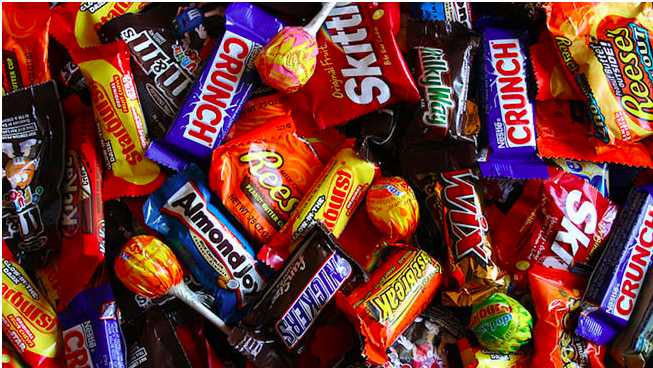The evolution of Halloween candy
October 9, 2020
It wouldn’t be Halloween without the candy. Over the years there has been an array of different candies handed out on Oct. 31st, but it wasn’t always this way.
When trick-or-treating started in the 1930s or 1940s, kids would get homemade cookies, pieces of cake, fruit, nuts, toys and coins. It wasn’t until the 1950s when candy manufacturers began to advertise their products for Halloween. As trick-or-treating became more popular, candy was regarded as a convenient and affordable offering. The traditional, singular-wrapped candy didn’t become the only acceptable Halloween treats until the 1970s. The reason for this being safety. Parents became fearful of poison or drugs or even razor blades that could be baked into cookies or cake.
Today, a number of the most popular candy brands have been around since the beginning. For example, the first Hershey milk chocolate bar was produced in the early 1900s and Hershey kisses made their debut in 1907. Company founder, Milton Hershey turned milk chocolate from a luxury to an affordable treat for average Americans.
In 1917, Harry Burnett Reese moved to Hershey where he was employed with the chocolate company. Inspired by his job, Reese started making candies in his basement. He built a factory of his own in the mid-1920s and produced an assortment of candies. In 1928 he invented the peanut butter cup using Hershey’s chocolate. During World War II, the lack of sales led him to narrow in and focus on the peanut butter cup. Hershey then acquired the H.B. Reese Candy Company in 1963.
In 1923, a struggling candy maker from Minnesota, Frank Mars, launched the Milky Way bar. This soon became a bestseller. 1930 brought along the Snickers bar followed by the 3 Musketeers bar in 1932. Mars’ son, Forrest Mars joined the company only to leave after a falling out with his father. He then moved to England where he invented the Mars bar in the early 1930s and M&Ms in 1941. Worried that World War II would produce a cocoa shortage, Mars partnered with Bruce Murrie, son of a Hershey executive in order to have access to supplies; the candy’s name stands for Mars and Murrie.
The Kit Kat bar was first sold in England in 1935 as Rowntree’s Chocolate Crisp and was renamed in 1937 to the Kit Kat Chocolate Crisp. The name is derived from a London literary and political group, the Kit-Cat Club. Since 1988, the brand has been owned by Nestle, maker of another favorite, the Nestle Crunch Bar, which debuted in the late 1930s.
Lastly, no Halloween candy article would be complete without the mention of candy corn. This colorful fall staple was invented in the 1880s by George Renninger of the Wunderle Candy Company of Philadelphia. Others would go on to make their own versions but done longer than the Goelitz Confectionery Company (now the Jelly Belly Candy Co.), which has been doing so since 1898.


